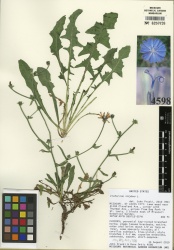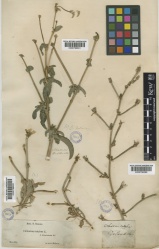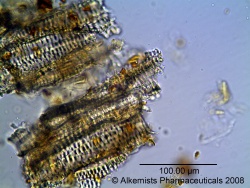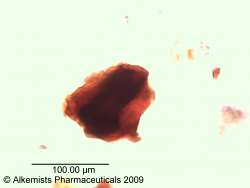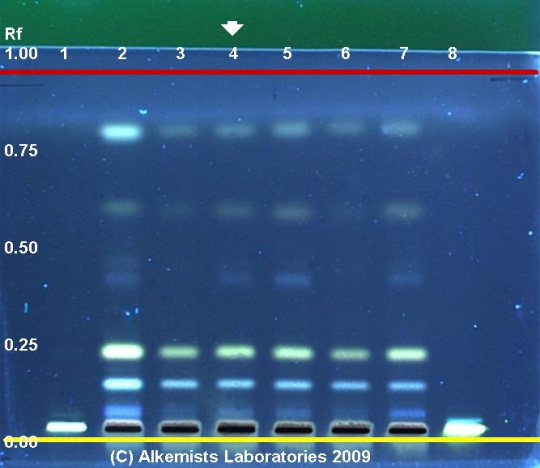Cichorium intybus (root)
Contents |
Nomenclature
Cichorium intybus L. Asteraceae
Standardized common name (English): chicory
Ayurvedic name(s): kasni
Pinyin name(s): ju ju (aboveground parts)
Botanical Voucher Specimen
 |
|
|
|
|
Organoleptic Characteristics
|
Macroscopic Characteristics
|
Microscopic Characteristics
 |
 |
|
|
|
High Performance Thin Layer Chromatographic Identification
|
Chicory (root) (Cichorium intybus) Lane Assignments Lanes, from left to right (Track, Volume, Sample):
Reference materials used here have been authenticated by macroscopic, microscopic &/or TLC studies according to the reference source cited below held at Alkemists Pharmaceuticals, Costa Mesa, CA. Stationary Phase Silica gel 60, F254, 10 x 10 cm HPTLC plates Mobile Phase CH2Cl2: Petroleum ether [8/2] Sample Preparation Method 0.3 g + 3 ml CH3OH sonicated + heated @ 50° C ~ 1 hr. Detection Method 10% Ethanolic H2SO4 -> 115° C 15 min -> UV 365 nm Reference see Pharmacopoeia of The Peoples Republic of China, Volume 1, 2005
|
Supplementary Information
Sources
- ↑ MOBOT, Tropicos.org http://www.tropicos.org/Image/100157670
- ↑ Royal Botanic Gardens, Kew. http://specimens.kew.org/herbarium/K000796601
- ↑ United States Dispensatory (1918)
- ↑ United States Dispensatory (1918)
- ↑ Culbreth, D. (1917) A Manual of Materia Media and Pharmacology, 6th ed.
- ↑ Elan M. Sudberg, Alkemist Laboratories http://www.alkemist.com
- ↑ Elan M. Sudberg, Alkemist Laboratories http://www.alkemist.com
- ↑ Elan M. Sudberg, Alkemist Laboratories http://www.alkemist.com
